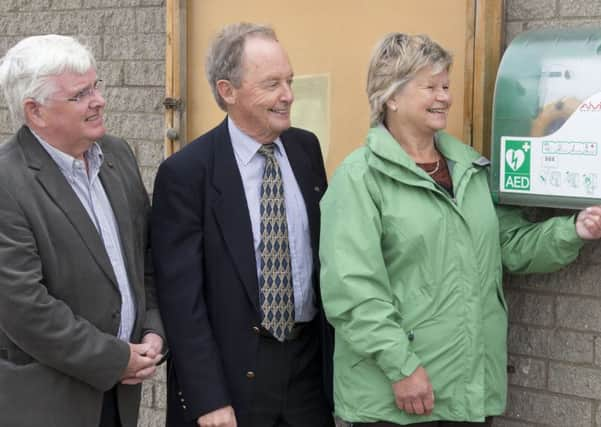Taking charge to help make hearts safer in north east Fife


Over the last few years, there has been a steady increase in the number of these boxes througout the villages and towns, with lifesaving significance.
East Neuk Responders and Operation HeartStart have made it their mission to ensure hearts, and lives, in north east Fife are safer with the installation of numerous public access defibrillators (PADs) – used in cases of sudden cardiac arrest they can deliver an electronic current through the chest.
Advertisement
Hide AdAdvertisement
Hide AdNow numbering 27 throughout St Andrews and the surrounds and 40 up and down the East Neuk the groups of volunteers have led the charge for Scotland.
“You have got to receive a shock in the first eight minutes to stand a chance of survival,” explained Gillian Duncan, chairman East Neuk First Responders. “We initially recognised that the East Neuk in particular was in need of attention because an ambulance – at its quickest – would get to an incident in 14 minutes where there would be slim to no chance of survival.”
Since Operation HeartStart began in 1989 and the East Neuk Responders in 2009, they have liaised with local businesses and communities to help fund and coordinate the installation of defibrillators as well as raise awareness and familiarisation through training.
“I am delighted to say we have had quite a number of saves now and giving people a chance that they just wouldn’t have had without us,” said Gillian.
Advertisement
Hide AdAdvertisement
Hide AdAlthough the East Neuk is well served by community First Responders, it could still take a trained volunteer over five minutes to arrive at an emergency. “That is a critical time during a cardiac arrest,” Gillian explained. “Every minute that is delayed in giving a shock, can be up to 10 percent of survival lost.”
Every year over 3,500 people around Scotland are treated by the Ambulance Service after having a cardiac arrest. Only around one in 20 people will survive.
An out-of-hospital cardiac arrest plan was launched by the Scottish Government last year which aims to equip an additional 500,000 people with CPR skills by 2020. Increasing bystander CPR aid can increase the likelihood of survival after OHCA by two or three times.
Although Operation HeartStart and First Responders deliver training to the public on the use of defibrillators Gillian emphasises how straightforward they are to use.
Advertisement
Hide AdAdvertisement
Hide Ad“Whilst no training is required, as the PAD tells you what to do, if you attend an awareness session it makes people more effective and gives them confidence and awareness.
“The biggest fear people have across the board is the worry that the casualty may not be in cardiac arrest. However, the defibs are full proof. We can’t override them and they will only deliver a shock to a shockable rhythm. So, they decide whether a shock is needed or not.”
Each defibrillator is maintained by a guardian who carries out a regular checks, to ensure the machine is fully operational. The organisation’s Defibrillator Coordinator passes on any information to the Scottish Ambulance Service. If a member of the public calls 999 (or 112), they can be connected to the nearest PAD.